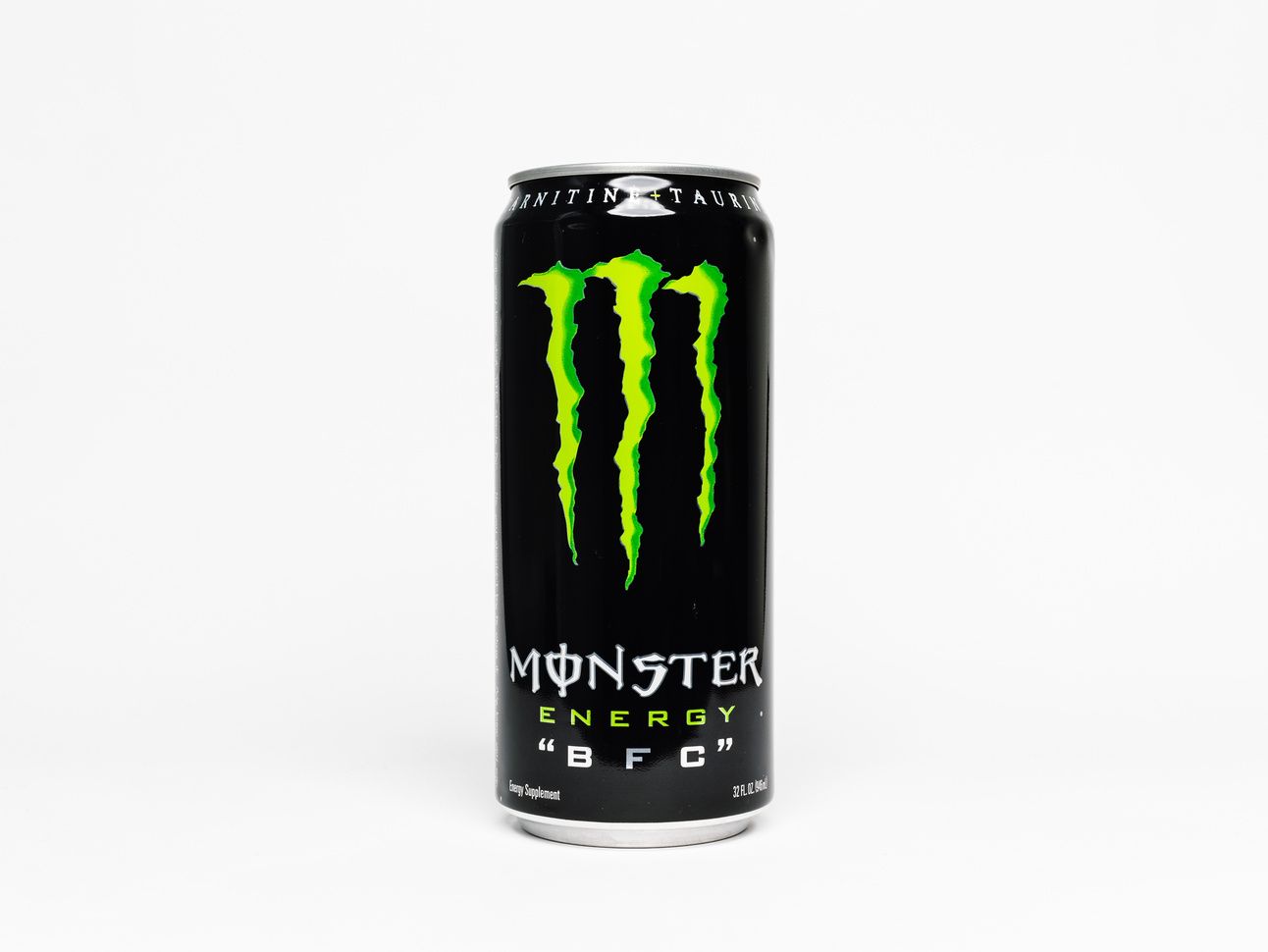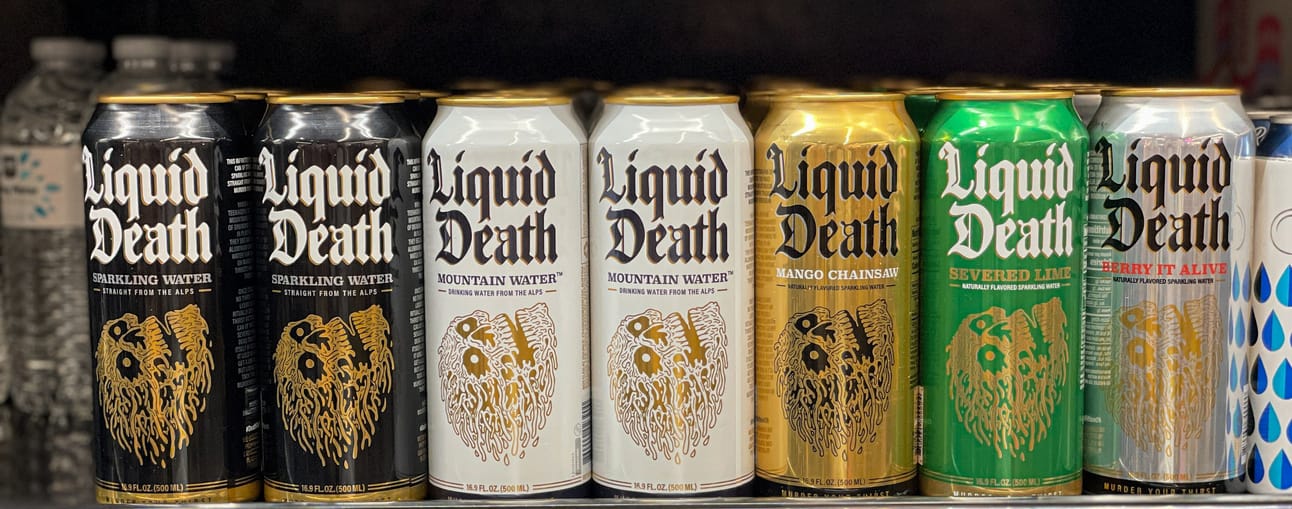
Hi there {{first_name}} - Jen here :)
In 2009, graphic designer Mike Cessario - a big fan of metal, rock, and punk music - went to the Vans Warped Tour.
If you’re unfamiliar with the Vans Warped Tour, it was a 46 stop punk rock festival that featured bands like Blink 182, the Offspring, and Sum 41.

The last year of the Warped tour was 2019, but when it did run it was at the height of summer in temperatures that would make standing still difficult (let alone performing or watching from the crowd).
The atmosphere at Warped was a little rebellious, edgy, and high energy.
Most of the performers were constantly chugging Monster Energy drinks just to keep up.

But then, while watching his favorite band perform, Mike Cessario spied a little subtle stagecraft.
Turns out that the musicians weren’t actually chugging Monster Energys.
Mike noticed they were dumping out the energy drinks and pouring water into the empty Monster cans. The musicians still looked like they were chugging Monster Energy - but were actually just drinking water.
The artists were able to keep up the illusion of drinking Monster but without actually having to drink it.
And then it struck Mike.
Why had no one marketed water like Monster Energy?
It was from this simple insight that Liquid Death - one of fastest growing consumer packaged goods companies in history - was born.

Unsurprisingly there’s some psychology and behavioral science at work behind its rise - used knowingly or not.
Today I’m breaking down:
How Liquid Death used Identity Marketing to get a foothold in the marketplace
Why distinctiveness helped Liquid Death take on Big Water
Why doubling down on “outsiders” helped solidify the brand
Today’s edition of Choice Hacking Ideas is brought to you by our sponsor:
Enterprise level marketing analytics at a starter price.
Introducing Ahrefs’ $29 Starter Plan!
Perfect for beginner marketers and SEOs. New Starter Plan offers unbeatable value:
Available Tools: Site Explorer, Keywords Explorer, Rank Tracker & more.
100 Monthly Credits: Explore data without breaking the bank.
Rank Tracking & Site Audits: Included at no extra credit cost.
Ready to elevate your marketing game? Start today for just $29/month!

How Liquid Death used Identity Marketing to get a foothold in the marketplace
When people first see Liquid Death, they’re usually pretty curious.
It doesn’t look like any other brand of water they’re used to seeing. At a glance it could easily pass for a can of beer.
And for a lot of Liquid Death’s early fans, that’s exactly what they wanted.

The brand held a certain appeal for a group known as “straightedge” - a sub-niche of punk culture who, in response to Punk’s reputation for excess drinking and drug use, refrain from smoking, drinking, drug use, and in some cases caffeine, casual sex, animal products, and even prescription drugs.
When these folks were at shows and festivals before Liquid Death existed, there really wasn’t a hydration option for them that didn’t make them stand out like a sore thumb.
A bottle of water doesn’t really fit in with a sea of Miller Lites in tallboy cans.
The rise of Liquid Death also coincided with the “sober curious” movement in the US which is when people, mostly younger Millennials and Gen Z, took some time to evaluate when, why, and how much they were drinking alcohol.
The sober curious weren’t committing to never drinking again, but often took breaks from drinking to be more mindful about how much they consumed.
Liquid Death helped put something in their hand that didn’t raise the kinds of questions or challenges from their peers that a bottle of water might, and helped signal to their friends that they were still part of the bigger group.
(To read more about the psychology of Signalling, check out how Apple, Spotify, and Grey Goose use it to drive sales.)

Why Distinctiveness helped Liquid Death take on “Big Water”
Liquid Death wasn’t a brand new idea - it remixed a visual branding approach (Monster’s edgy aesthetic) with a new category (bottled water).
Because nearly every bottle water brand was using design elements that had mental associations like nature and pure, and basically blue green and white as their brand colors, it was incredibly easy to bring something new to the category.
Just the name, Liquid Death, tells you this is going to be a very different brand than Smartwater, Evian, or Poland Spring.

Their brand and product design makes them distinct and therefore easier to remember.
And that makes their marketing much more efficient.
Why?
The purpose of marketing is to build MEMORIES and mental associations so when people need your thing, they REMEMBER you and buy it from you.
And when you have a distinctive brand that stands out as much as Liquid Death does, the Von Restorff Effect kicks in, which says that things that are different get noticed and remembered.

Why doubling down on “outsiders” helped solidify the brand
Liquid Death is firmly entrenched in multiple “outsider” subcultures like punks, goths, and the metal scene. You’ll also see their products pop up next to comedians, independent podcasters, skaters, and even drag queens.

Liquid Death product placement on “So True with Caleb Hearon” with guest Bob the Drag Queen (right).

A limited edition Liquid Death “Murder Your Thirst” skateboard with paint made from professional skateboarding legend Tony Hawk’s actual blood.
Liquid Death also does something that’s not immediately obvious that authentically aligns them with subcultures like these.
It tasers its haters.
Here’s what I mean…
Just like a lot of the subcultures that have embraced Liquid Death, the brand sees itself as sitting outside the mainstream culture (the culture of bottled water, in their case) which means they attract negative attention.
And in many ways, Liquid Death’s marketing is defined by its defiance against people who think their product is overhyped or simply not good.
In one ad they found two real internet commenters who claimed “Liquid Death is the worst water.” So the brand flew these folks out to LA for a blind water taste test.
If they picked Liquid Death as the worst water in the blind taste test, they got $1000.
But if they picked another brand as the “worst water” the haters got tasered.
(Obvious heads up, the video below contains people getting tasered)
And that’s one way to really solidify the identity of a brand - by being unafraid to confront people who criticize your product (this is a bold strategy, by the way, and not one I would recommend for most brands).
Actions like these are the difference between a brand fitting into a subculture and becoming an authentic symbol of that subculture’s values, and a brand that just slaps a viral TikTok aesthetic on a video to try and get attention. Nutter Butter, I’m looking at you…
The more outlandish Liquid Death’s marketing stunts, the more they’re embraced by subcultures that see authenticity as key component of the brands they support - whether they consciously acknowledge it or not.
Until next time,
Jen

Jen Clinehens
Founder & MD Choice Hacking
ChoiceHacking.com
Courses, Consulting, and Coaching to create 2x more effective marketing (so sales and profit can 2x, too) with marketing psychology and behavioral science.


